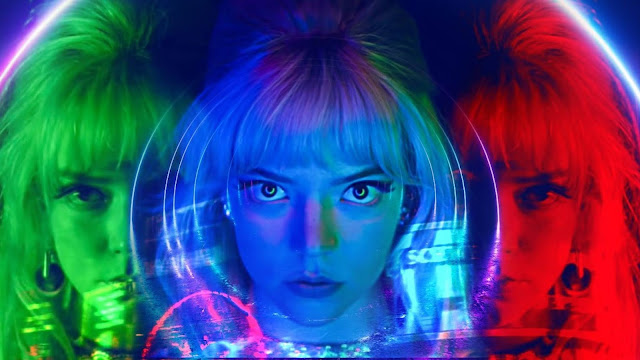Contemporary 2021 Selection: Last Night in Soho (2021)
Edgar Wright's "Last Night in Soho"
Edgar Wright is a director in the business of making stylish, rhythmically driven films. All these stylistic films always seem to be half-comedies and half-'genre' films. Those 'genre' films could be anything from action to horror. His 2021 film, "Last Night in Soho" is no different. Half comedy-half thriller/horror, the film takes you on a colorful ride through London's Soho district throughout different points in time. Wright seems to infuse the film with themes of anti-nostalgia and the dangers of using the fashion and music of the past as a crutch to comfort yourself in modern times.
The film is about Ellie, who moves to London to go to fashion school. Ellie seems to have some sort of psychic gift. She is able to see ghosts and spirits, including her dead schizophrenic mother who killed herself when Ellie was 7. Like her mother, Ellie is obsessed with the fashion and music of the 1960s. After only a few weeks in London, Ellie begins to have visions of a girl named Sandy. When she dreams at night, she is taken back to the late 60s and watches as Sandy tries to become a nightclub singer. After realizing that Sandy has become trapped in a prostitution ring, Ellie begins to become haunted by the ghosts of the men who abused Sandy. After watching Sandy get murdered one night in her visions, Ellie decides to search for the killer. Upon her investigation, she discovers that her landlady is actually Sandy. She tells Ellie that the Sandy she once was died long ago and was replaced by a resentful and angry version of herself, who killed the men who came to 'visit' her. Sandy then tries to kill Ellie unsuccessfully, and in turn causes a housefire that encompasses her.
Wright infuses the film with hazy neon coloring, likely to draw parallels to the psychedelic fashion of the 60s. The continued use of these bright neon colors also instills the images with a certain 'acid trip'-like quality. The dreamy out-of-body visual experiences help the viewer to fall into Ellie's intoxicated mindset. However, the colors begin to become nauseating as the film starts to turn into a bad trip. The lifestyle that Ellie idolizes is now a nightmare reality for her. The use of color in the film by Wright invites the viewer at the beginning, only to completely repel the viewer at the end.
Another stylistic attribute of Wright's film is his use of music. Like most of his films, he infuses a musical rhythm to the story, aided by an appropriate soundtrack. The 60s soundtrack of the film helps aid in telling the story, as different songs are used throughout as a framing device in assisting the narrative. It almost seems like if you take away the movie itself, the songs could provide the structural portrayal of the story.
Like all his films, Wright chooses style and rhythm to tell his stories. With "Last Night in Soho," the style is that of 1960's colors and fashions; the rhythms of 60s tunes. These 60s elements entice the viewer into the acid trip quality of the narrative, only to turn dark and sickly. Our nostalgic desires are only rose-colored glasses to Wright. In taking the glasses off, we are able to really see the darkness hiding behind the psychedelic colors.




Comments
Post a Comment